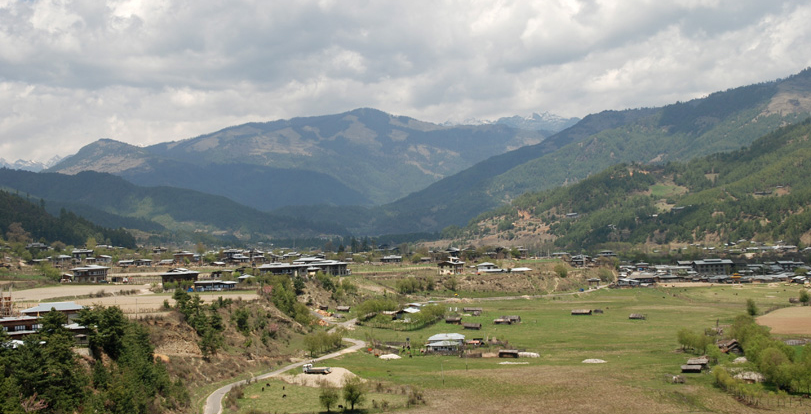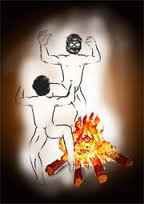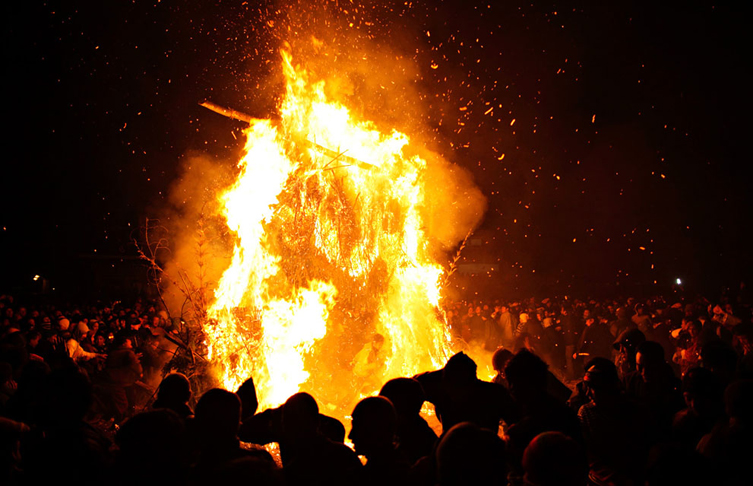
[ Thimphu Festival Tour | Thangbi Mani Festival Tour | Jambay Lhakhang Drup Tsechu Festival Tour | Black Crane Festival Phobjikha Tour | Punakha Domchey Festival Eight Nights Tour | Punakha Domchey Festival Ten Nights Tour | Chorten Kora Tsechu (arrive Paro, Depart Paro) | Chorten Kora Tsechu (arrive Paro, exit India) | Chorten Kora Tsechu (arrive India, exit Paro) | Gom Kora Tsechu (enter Paro, exit Paro) | Gom Kora Tsechu (enter Paro, exit India) | Gom Kora Tsechu (enter India, exit Paro) | Paro Tsechu Festival Tour | Paro Tsechu Festival 7 Dzongkhags Tour | Paro Tsechu Festival Tour with Druk Path Trek | Ura Yakchoe Festival Tour ]
Jambay Lhakhang Drup Festival Tour
- 10 Nights 11 Days

- Bumthang, Central Bhutan
Dzongkhags covered: Paro, Thimphu, Punakha, Wangdue, Trongsa, Bumthang
Duration: 10 Nights 11 Days
Itinerary Outline:
Day 01: Arrive Paro
– Thimphu
Day 02: Thimphu Sightseeing
Day 03: Thimphu – Punakha
Day 04: Punakha/Wangdue Sightseeing
Day 05: Punakha – Trongsa – Bumthang
Day 06: Bumthang Sightseeing
Day 07: Bumthang Festival & Sightseeing
Day 08: Bumthang – Punakha
Day 09: Punakha – Paro
Day 10: Paro Sightseeing
Day 11: Depart Paro
Jambay Lhakhang Drup:
Jambay Lhakhang Drup: This festival is held in Bumthang annually around the end of October or sometimes the beginning of November; and is held to honour the deeds of Guru Rinpoche, an Indian saint who brought the Tantric form of Buddhism to Bhutan. A variety of masked and traditional dances are performed. This festival is one of the most important in Bhutan and the highlight of this festival is the Fire Dance, a dance for bearing children is performed at night to bless infertile women. These dances were originally designed by a Bhutanese Saint, Terton Pema Lingpa, the great treasure finder of the 15th century.
Detailed Itinerary:
Arrive Paro – Thimphu
The flight to Paro is one of the most spectacular mountain flights in the world, with a constantly changing panorama of some of the highest mountains on earth. Our representative will meet you at Paro airport. After lunch enjoy afternoon sightseeing around Paro, including a visit to the Tag Dzong Museum housing many religious relics, works of art and handicrafts offering a great orientation into Bhutan’s historical, cultural, and religious past. Next, visit the Rinpung Dzong to see the painting of the great saint Milarepa, considered as the master of meditation by the Bhutanese and believed to have attained enlightenment in his lifetime. Dzong’s are large fortresses and contain the monastic body and district administrative centres. Afterwards, drive to the capital, Thimphu (1.5 hours) following the Pachhu River. Overnight at your hotel in Thimphu.
Day 02: Thimphu Sightseeing
Thimphu is the nation's capital. Enjoy a full day of sightseeing, including a visit to the National Memorial Chorten, constructed by the Royal Queen Mother as a memorial stupa for the Third King who passed away in 1972. Continue on to the 12th century Changangkha Temple and the Zilukha Nunnery. If there is time, you may visit the nursing pen for the Takin- the national animal of Bhutan, and Tashichhodzong, ‘the Fortress of the Glorious Religion’ housing some Ministries, His Majesty’s Secretariat, and the Central Monk Body. Overnight at your hotel in Thimphu.
Day 03: Thimphu – Punakha
Drive over the Dochula pass (3,100 metres) which on a clear day offers an incredible view of Himalayan peaks before descending into the comparatively pleasantly warm Punakha valley (about 3 hrs total driving time). The drive through the countryside affords a glimpse of everyday life in this most remote of Himalayan kingdoms. In the Dochula area there are vast Rhododendron forests that grow to tree size and bloom in late April/early May covering the mountains in a riot of glorious spring colour. Punakha was the ancient capital of Bhutan. On arrival, visit the Punakha Dzong, the "Palace of Great Happiness" built in 1637 by the Shabdrung, the ‘Unifier of Bhutan’. It is the winter headquarters of the Je Khenpo and hundreds of monks who move en masse from Thimphu to this warmer location. The three story main temple of the Punakha Dzong is a breathtaking example of traditional architecture with four intricately embossed entrance pillars crafted from cypress and decorated in gold and silver. It was here in 1907 that Bhutan's First King was crowned. Overnight at your hotel in Punakha/Wangduephodrang.
Day 04: Punakha/Wangdue Sightseeing
In the morning drive to Yabesa village and hike to through ricefields and up to Khamsum Yueley Namgyal Chorten, built by Her Majesty the Queen Mother, Ashi Tshering Yangdon Wangchuck. Perched high on a hill on the bank of the river, the Chorten houses paintings belonging to the Nyingmapa Buddhist Tradition. Take a picnic lunch on a picturesque riverside before vsiting the ruins of Wangduephodrang Dzong. Built in 1639, the strategically located Dzong is perched on a spur at the confluence of two rivers. In the 17th century Wangduephodrang played a critical role in unifying the western, central and southern regions of the country. Unfortunately a fire razed it in 2012. Renovation is underway. Afterwards drive back into the Punakha valley for a short walk to Chimmi Lhakhang, Temple of the Drukpa Kuenley who is also known as the Divine Madman. He inherited the Divine Madman title since he revolted against the orthodox Buddhism in his time. He taught the people that religion is an inner feeling and it was not necessary that one should be an ordained monk. He is also considered a symbol of fertility and most childless couples go to his temple for blessing. Overnight at your hotel in Punakha/Wangduephodrang.
Day 05: Punakha – Trongsa – Bumthang
 Drive
from Punakha to Bumthang via Trongsa (8 hrs) over the Dochula pass (3,100
m) and Pelela pass (3,420 m) on the Black Mountain range. Enroute visit
beautiful Chendebji Chorten, erected in the 18th century. The imposing
Trongsa Dzong can be viewed across a deep canyon to signal your approach
to the town around a curving road. Trongsa is the ancestral home of
Bhutan’s ruling dynasty. After lunch, visit Trongsa Dzong, the
largest Dzong in Bhutan. The view from the Dzong is spectacular and
one can see across the landscape for many miles. Also visit Trongsa's
Tag Dzong museum housing an incredible collection of historical artefacts
of the Royal Family. Continue driving to Bumthang, home to some of Bhutan’s
oldest Palaces and temples. The valley’s barley fields, apple
groves and meadows lie below huge hills which climb up towards the Himalayan
mountain wall separating Bhutan from Tibet. Try to stay awake until
midnight to witness the opening proceedings of the Jambay Lhakhang Drup
Festival, including an unusual naked dance (left) performed
to sanctify the region. Overnight at your lodge in Bumthang.
Drive
from Punakha to Bumthang via Trongsa (8 hrs) over the Dochula pass (3,100
m) and Pelela pass (3,420 m) on the Black Mountain range. Enroute visit
beautiful Chendebji Chorten, erected in the 18th century. The imposing
Trongsa Dzong can be viewed across a deep canyon to signal your approach
to the town around a curving road. Trongsa is the ancestral home of
Bhutan’s ruling dynasty. After lunch, visit Trongsa Dzong, the
largest Dzong in Bhutan. The view from the Dzong is spectacular and
one can see across the landscape for many miles. Also visit Trongsa's
Tag Dzong museum housing an incredible collection of historical artefacts
of the Royal Family. Continue driving to Bumthang, home to some of Bhutan’s
oldest Palaces and temples. The valley’s barley fields, apple
groves and meadows lie below huge hills which climb up towards the Himalayan
mountain wall separating Bhutan from Tibet. Try to stay awake until
midnight to witness the opening proceedings of the Jambay Lhakhang Drup
Festival, including an unusual naked dance (left) performed
to sanctify the region. Overnight at your lodge in Bumthang.

Locals run through a huge flaming gate made from dry grass during
"Mewang", the fire blessing ceremony during the Jambay Lhakhang
Drup Festival, at Jakar in Bhutan's Bumthang valley. Locals believe
that running through the flaming gate in this ceremony will cleanse
them of their sins for the year.
Day 06: Bumthang Sightseeing
In the morning visit Kurjey Lhakhang, one of the most sacred places in the Kingdom where Bhutan’s patron saint Guru Rinpoche meditated; and the 7th century Jambay Lhakhang. It dates back to the origins of Buddhism in Bhutan and is one of the Kingdoms oldest temples. After lunch, visit Jakar Dzong and Tamshing Lhakhang, founded in 1501 by Pemalingpa and containing interesting and ancient Buddhist wall paintings. Afterwards enjoy exploring the village of Jakar, Bumthang’s main township. Overnight at your lodge in Jakar, Bumthang.
Day 07: Bumthang Festival & Sightseeing
Return to experience more of the festivities at Jambay Lhakhang, or enjoy an excursion to Tang Valley, the most remote valley in the Bumthang district. Activities may include a 45 minute walk uphill to Ugyenchholing Palace, built in the 16th century by the Trongsa Penlop Tshokey Dorji. The main building in the complex now features a fascinating museum offering a real insight into the lifestyle of a Bhutanese noble family. Highlights include a book of divination, a dakini dance costume made of bone. You may also visit 14th century Tang Rimochen Lhakhang where Guru Rinpoche meditated and Membartsho (Burning Lake), where some of Guru Rinpoche's treasures were found in the 15th century by the famous treasure discover Pema Lingpa. It is a good location to meditate. Overnight at your lodge in Bumthang.
Day 08: Bumthang – Punakha
In the morning visit Kurjey Lhakhang, one of the most sacred places in the Kingdom where Bhutan's patron saint Guru Rinpoche meditated. Afterwards drive to Punakha, stopping for lunch along the way. Overnight at your hotel in Punakha.
Day 09: Punakha – Paro
Drive back to Thimphu where you will enjoy lunch and have an opportunity to visit handicraft and souvenir stores. Afterwards proceed to Paro, visiting Semtokha Dzong en route. The Dzong, built in 1627, is the oldest in Bhutan. It now houses the Institute for Language and Culture studies. On arrival in Paro, check into the hotel. Afternoon at leisure. Overnight at your hotel in Paro.
Day 10: Paro Sightseeing
After breakfast hike to Taktsang Monastery. The trail
is broad and the walk of approximately 2 hours uphill takes you to almost
a kilometre above the Paro valley floor (for those who cannot hike we
will arrange a horse for transfer up to the viewing point). The view
of Taktsang Monastery built on a sheer cliff face 900 metres above the
valley floor is a spectacular sight. The Monastery is also an important
pilgrim site for the Buddhists. The great Guru Rinpoche is said to have
flown here on the back of a tigress when he brought the teachings of
the Buddhist Dharma to Bhutan in the 8th Century. He then mediated in
a cave there for three months where the monastery was later built. Nearby
there is a teahouse where you can stop for refreshments. In the afternoon
drive to the ruins of the 17th Century Drugyal Dzong, an historic monument
built by the Shabdrung to commemorate his victory against invading Tibetans
in 1644. In fine weather the towering peak of the sacred Mount Jomolhari
(7314 m) appears as a stunning backdrop. On the return drive to Paro,
visit the 7th Century Kyichu Lhakhang, one of the 108 temples constructed
by the Tibetan king Songtsen Gampo.
Alternatively, Day 10 could be spent on a day trip to the Haa
Valley, one of the most picturesque districts in Bhutan. Reached via
the beautiful Chelela Pass, Haa Valley is characterised by its surrounding
rugged and mountainous terrain. Overnight at your hotel in Paro.
Day 11: Depart Paro
Breakfast in the hotel, then drive to the airport for flight to your onward destination.... and it's Good Bye for now...
For Clients travelling in peak seasons and Festivals time, it is necessary to book the Tour at least 2 1/2 months in advance. Festivals held in autumn and spring are peak time for tourists and without early reservation it can be difficult to confirm flights and hotels. As festival times are the most popular times for visitors to come to Bhutan, flight seats and hotel rooms will be on high demand. Book early to avoid disappointment.
| |
BACK TO FESTIVAL TOURS MAIN PAGE |